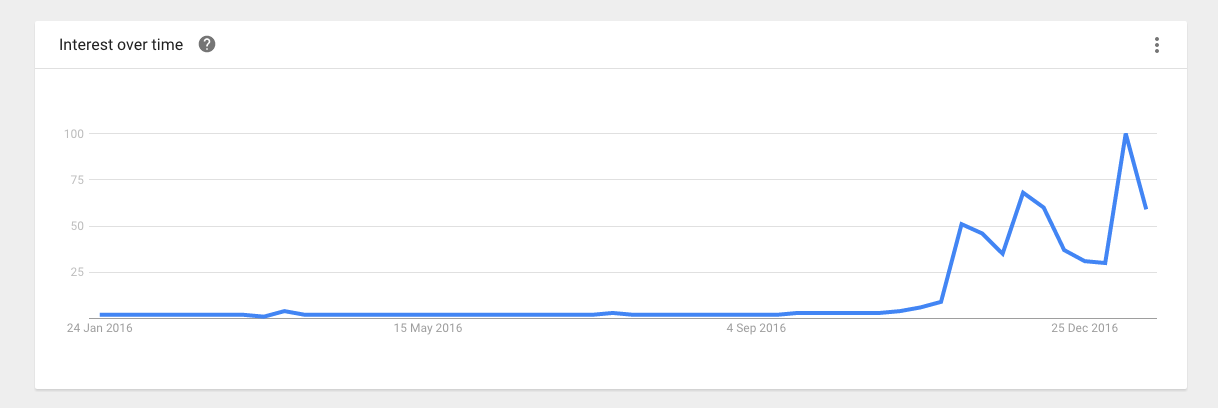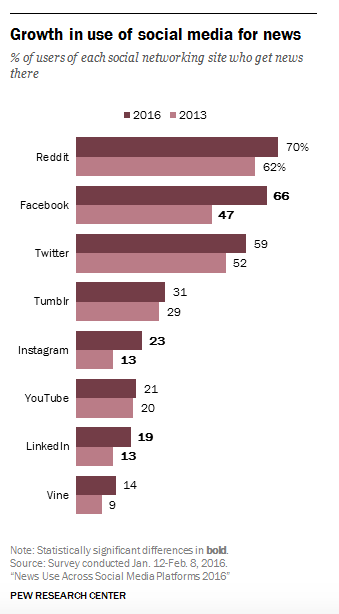
Since when do we start talking about fake news? And where do the fake news come from?
It is interesting to take a look at how the term ‘fake news’ appears in Google Trend. Few months ago, almost no one was talking about fake news. The term is barely registered before October. Now you can hardly turn on the real news without hearing it.
What’s more interesting is to see how this term is interested in terms of regions and its related topics. Donald Trump, Buzzfeed, Hilary Clinton are the top three related topics when people search for ‘fake news’ in Google. This explains why ‘fake news’ become the national hot topic since the 2016 U.S Presidential Election.

Google Trends
This election proved a lot of things to a lot of people. One of those things is the power of ‘fake news’. The New York Times wrote that fake news had previously maintained a presence on the Internet and within tabloid journalism in years prior to the 2016 U.S. election. Before the election, fake news had not impacted the election process to such a high degree. Subsequent to the 2016 election, the issue of fake news turned into a political weapon between supporters of Hillary Clinton and Donald Trump; due to these back-and-forth complaints, the definition of fake news as used for such polemics became more vague.
Fake news boomed because there are more and more people interested in reading the news that fits their individual ideologies. The term is now on the tips of everyone’s tongue. President-elect Donald Trump tried to define ‘fake news’ in his own way during his first press conference since the election. As CNN reporter Jim Acosta attempted to ask a question Trump quickly shut him down, saying he wouldn’t “give him a question” before calling his outlet “fake news.”
Away from the US elections, fake news breaks down into two wider categories: That which was fabricated and that which was exaggerated or mistaken.
So where exactly do fake news come from? The answer is clear: The internet. While the internet has enabled the sharing of knowledge and information, “A lie gets halfway around the world before the truth has a chance to get its pants on”, said by Winston Churchill. Social media like Facebook and Twitter encourage people to be better informed. Their technology fuelled the rise of fake news. Meanwhile, creators of fake news found that they could capture so much interest that they could make money off fake news from high traffic of their sites.
1. Social Media
A majority of U.S. adults – 62% – get news on social media, and 18% do so often, according to a new survey by Pew Research Center. Most internet users get news from Reddit, Facebook and Twitter. In term of general usage of social media, Facebook is the greatest social media website and Youtube is the next greatest. Compare to figures in the same research done in 2013, there is an obvious growth in use of all types of social media for news. It seems that more and more of us are reading and even believing information that is not just inaccurate, but totally made up.

There are criticisms about these social media companies are taking heat for influencing the outcomes of the U.S. presidential election and Brexit referendum by allowing fake news, misinformation campaigns and hate speech to spread. Numbers of false reports that are dressed up to look like genuine news articles were passed around widely on Facebook, retweeted on Twitter.
2. Fake news websites
There are hundreds of fake news websites out there, from those which deliberately imitate real life newspapers, to government propaganda sites, and even those which tread the line between satire and plain misinformation.

National Report
The National Report is a famous example for fake news. Some fact-checking websites described it as a satirical fake news site. The National Report describes itself as a “news and political satire web publication” and provides a disclaimer that “all news articles contained within National Report are fiction”. However, its website ironically states that it is “America’s #1 Independent News Source.” Stories from the National Report have been taken seriously by third parties such as Fox News Channel, and the site drew criticism for running a series of fake stories about Ebola outbreaks in the United States. Although the story was also rewritten by other websites, the original National Report story received six times as many “shares” on social media sites as other stories did.
Other examples of fake news sites:
You may spot the slight modification of the existing domain of the real ABC News. Its logo is also strikingly similar.
It is a non-existent publication, that an FBI agent suspected of leaking emails from Mrs Clinton’s private server had been found dead in a murder or suicide. With the help of the flow of news on Facebook, that report was shared up to 100 times a minute on the network.
A disclaimer on the site reads: “Our website and social media content uses only fictional names, except in cases of public figures and celebrity parody or satirisation.”
These sites deliberately publish hoaxes, propaganda, false news by using social media to drive web traffic and amplify their effect. They seek to mislead, rather than entertain, readers for financial, political, or other gain – They give birth to ‘fake news’.
Leave a Reply